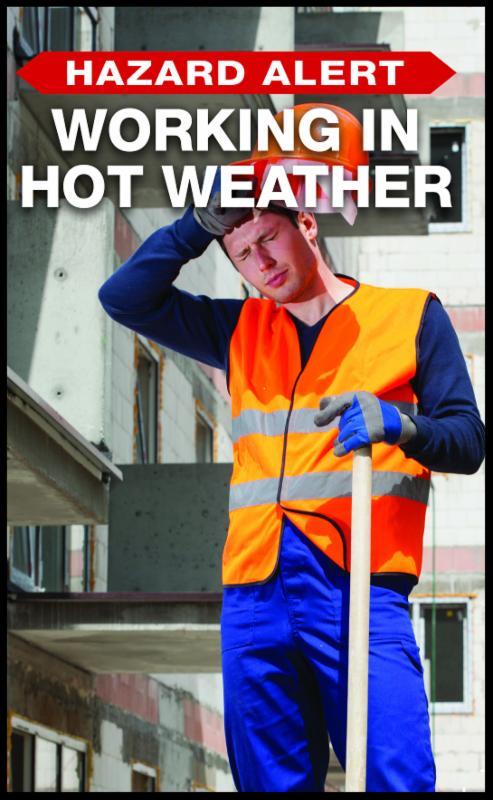|
CPWR UPDATE
|
June 2017
| |
From the Desk of Chris Trahan Cain, Executive Director
|
|
|
|
 With the start of summer, it's time to take steps to protect yourself and your employees from heat exhaustion and heat stroke. Construction workers -- who work outdoors in direct sunlight or in hot, enclosed spaces -- are especially at risk. In 2015 alone, 17 construction workers died and many more became sick from working in the heat. Heat-related illnesses and deaths are preventable. Workers can dress for conditions in light-colored, breathable clothes. Employers should plan frequent water breaks in shaded or cooled areas for their employees. And everyone should know the symptoms of heat stroke, so they can spot a co-worker in danger and call for help. CPWR has published a new Hazard Alert that reviews heat hazards and the steps to prevent heat illness. It's an ideal handout for worker safety talks and training classes -- contact CPWR if you would like to request free copies to distribute, or download copies in English and Spanish from our website. You can find this, and more information and tools to help you work safely in hot weather, on our Working in Hot Weather web page.
|
|
TOOLS FOR SAFETY AND HEALTH
Trench Safety
A cubic yard of soil weighs as much as a car, so a trench collapse can kill in minutes. That's why the National Utility Contractors Association (NUCA) wants to follow the example of the successful National Safety Stand-Down to Stop Construction Falls with a Trench Safety Stand-Down June 19-26. If you want to do a safety review on trench hazards and safety procedures, CPWR can help. Visit CPWR.com for a toolbox talk on trench safety, a Hazard Alert card, and a compelling video based on a real-life incident.
|
RESEARCH NEWS
Harm from Workplace Vapors, Gases, Dust and Fumes Extends into Retirement
High cumulative exposures to vapors, gases, dust and fumes on the job lead to a higher risk of COPD (chronic obstructive pulmonary disease) -- and a faster decline in lung function in retirement, long after the exposures have ended. That's the conclusion of a CPWR-supported study that reviewed test results from 3,150 construction workers participating in the Building Trades Medical Screening Program (BTMed). Longitudinal decline in lung function among older construction workers recently appeared in the journal Occupational and Environmental Medicine. For a one-page summary of the key findings, CLICK HERE.
|
June 28 @ 2pm ET (45 min). Assessment and control of exposure to reactive chemicals in construction: Spray polyurethane foam applications (SPF). This webinar will summarize research findings on exposure to isocyanates and flame retardant TCPP during spray foam applications, and explore the adequacy of the current work practices and PPE to prevent exposures to isocyanates and other foam ingredients. CLICK TO REGISTER
|
Inhalation Exposure during Spray Application and Subsequent Sanding of a Wood Sealant Containing Zinc Oxide Nanoparticles. Michael R. Cooper, Gavin H. West, Leonard G. Burrelli, Daniel Dresser, Kelsey N. Griffin, Alan M. Segrave, Jon Perrenoud and Bruce E. Lippy, 2017. Journal of Occupational and Environmental Hygiene
Facilitators and barriers to the adoption of ergonomic solutions in construction. Ann Marie Dale, Lisa Jaegers, Laura Welch, Ellen Barnidge, Nancy Weaver and Bradley A. Evanoff, 2017. American Journal of Industrial Medicine
|
BAC/IMI Trainers Participate in Multi-Trade Trainer Noise Survey, BAC Journal
Construction fatalities increase as economic recovery continues, Business Insurance
'These are real people behind the numbers': Fatal falls in construction on the rise, Safety + Health
|
|
|
|